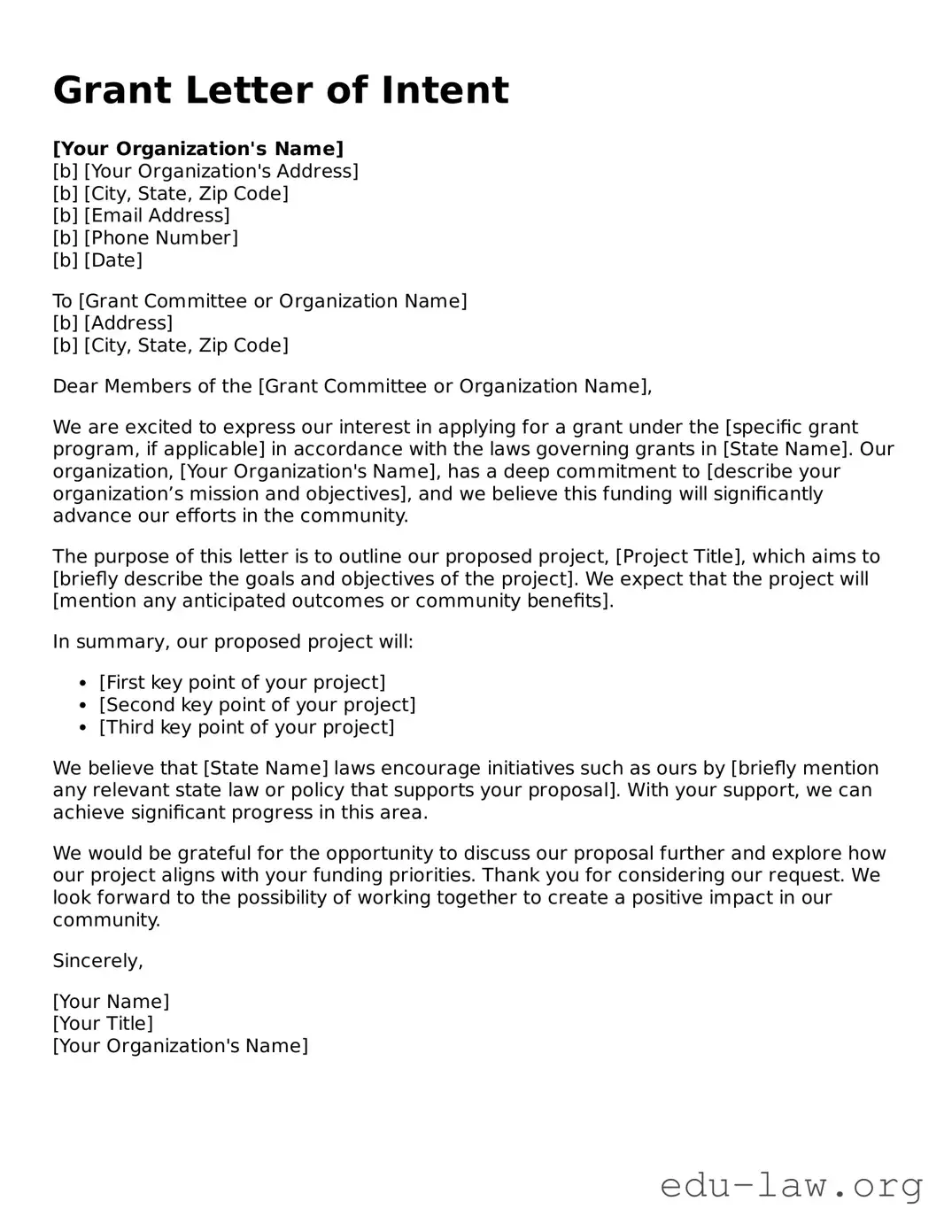Grant Letter of Intent
[Your Organization's Name]
[b] [Your Organization's Address]
[b] [City, State, Zip Code]
[b] [Email Address]
[b] [Phone Number]
[b] [Date]
To [Grant Committee or Organization Name]
[b] [Address]
[b] [City, State, Zip Code]
Dear Members of the [Grant Committee or Organization Name],
We are excited to express our interest in applying for a grant under the [specific grant program, if applicable] in accordance with the laws governing grants in [State Name]. Our organization, [Your Organization's Name], has a deep commitment to [describe your organization’s mission and objectives], and we believe this funding will significantly advance our efforts in the community.
The purpose of this letter is to outline our proposed project, [Project Title], which aims to [briefly describe the goals and objectives of the project]. We expect that the project will [mention any anticipated outcomes or community benefits].
In summary, our proposed project will:
- [First key point of your project]
- [Second key point of your project]
- [Third key point of your project]
We believe that [State Name] laws encourage initiatives such as ours by [briefly mention any relevant state law or policy that supports your proposal]. With your support, we can achieve significant progress in this area.
We would be grateful for the opportunity to discuss our proposal further and explore how our project aligns with your funding priorities. Thank you for considering our request. We look forward to the possibility of working together to create a positive impact in our community.
Sincerely,
[Your Name]
[Your Title]
[Your Organization's Name]
